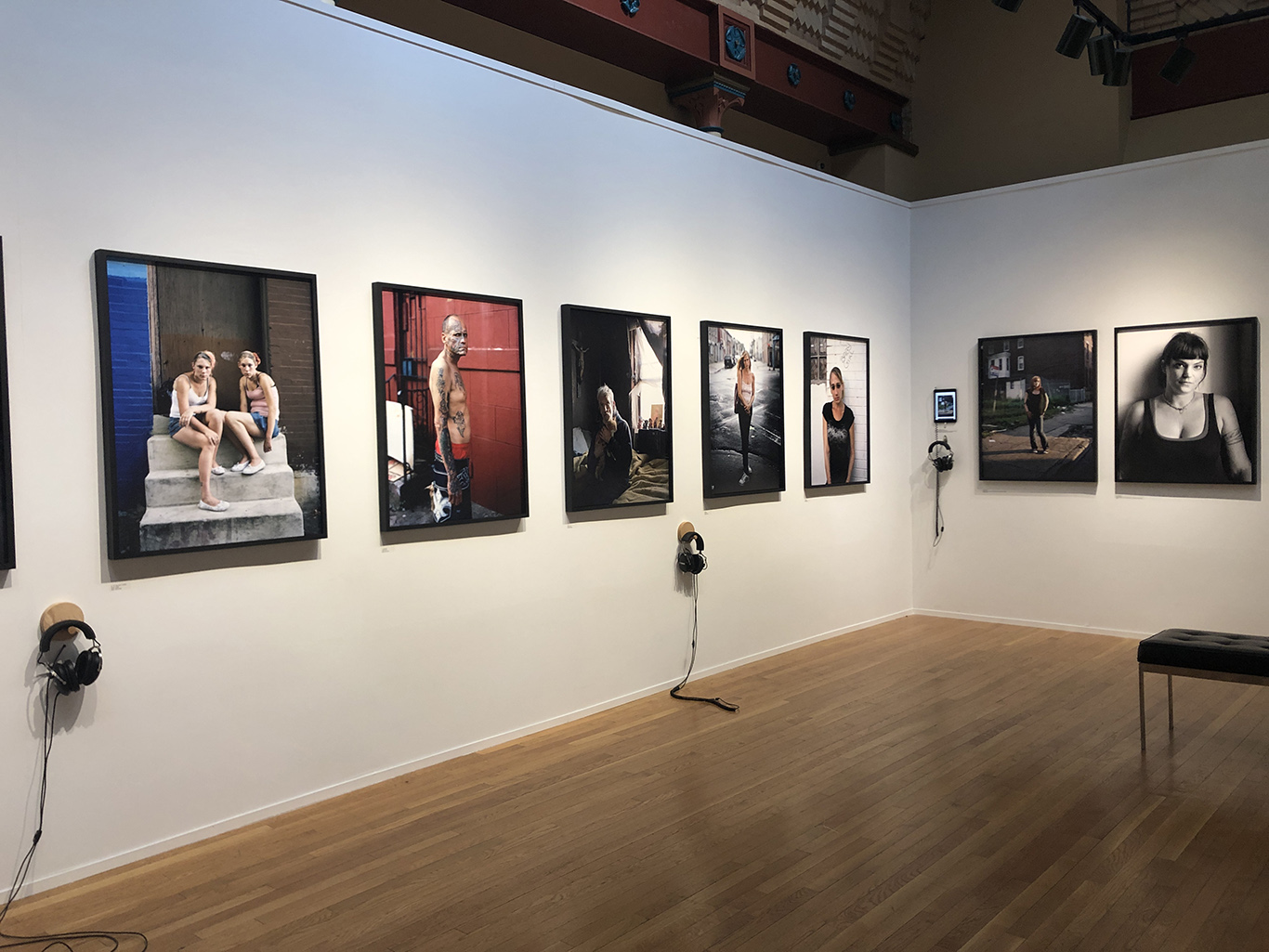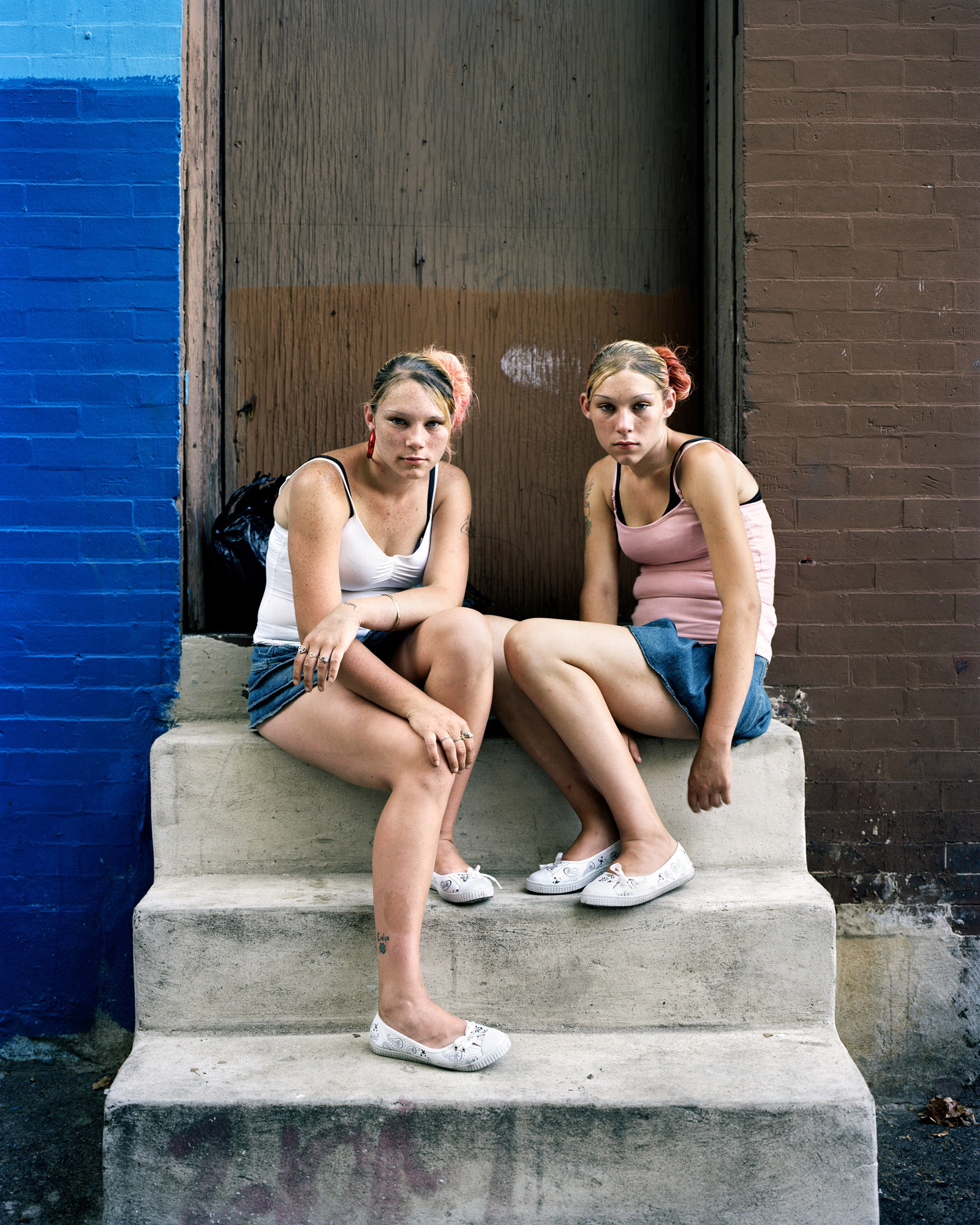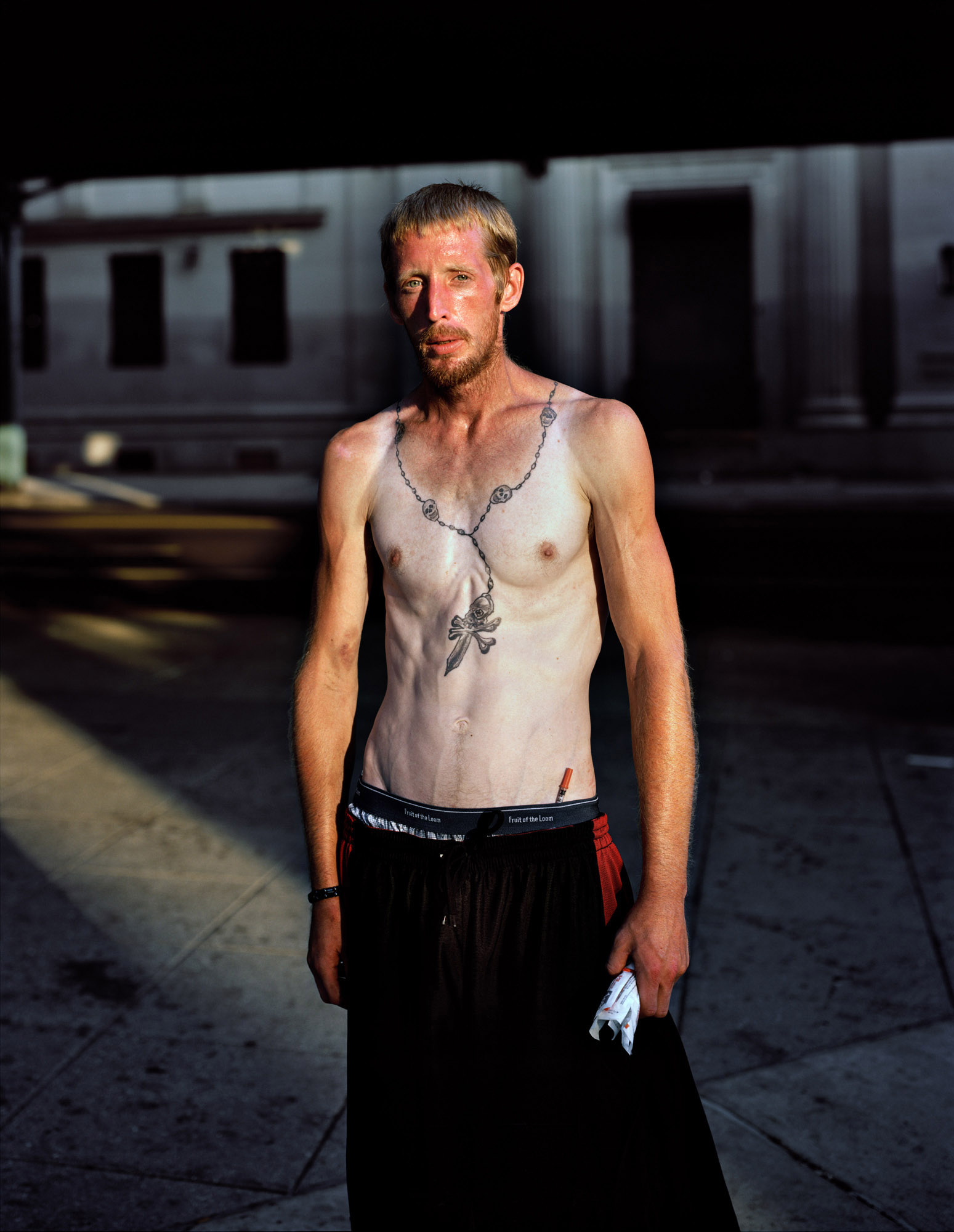
The opioid epidemic continues to wreak havoc in the Philadelphia community, and Drexel University graduate and photographer Jeffrey Stockbridge has invested over ten years into capturing footage that reveals what’s really going on in areas like Kensington.
His exhibit “Kensington Blues,” which runs through the end of March in the Paul Peck Alumni Center Gallery, thoughtfully fuses together a myriad of photographic techniques to depict the emotional and physical turbulence of drug addiction in hopes of rallying the public to get involved and to support community harm reduction practices.
“How many people need to die in order for the city to do something about it?” Stockbridge said. “This exhibit is really a call to action — it’s time for the city of Philadelphia to do something to help end overdose deaths.”
He said it’s time to show wholehearted compassion and to try to craft creative solutions for this issue that has already had an irreversible effect on the city. Last year, over 1,100 people in Philadelphia alone died from an overdose.
Though efforts have been taken across Philadelphia, which Stockbridge said he applauds, he said it’s still not enough. Despite the emergence of the Philadelphia Resilience Project backed by Mayor Jim Kenney that aims to open a supervised overdose protection site called Safehouse, the federal government has already preemptively started a lawsuit against the site.
“That’s unacceptable in my opinion,” he said. “I don’t know if any of the [people] who are responsible for this lawsuit against the city have actually taken the time to walk down Kensington Avenue or Emerald Street or Gurney Street to see what it’s like. If they did, I think they would rethink their position — at least I hope they would.”
Though he can’t outright change the mind of lawmakers, he said he is hoping this project can better delineate how addiction in a neighborhood like Kensington is represented by humanizing what’s happening to victims in a way that still shows the ceaseless brutality of the opioid crisis.
He first became acquainted to this population of people as he carried out his senior thesis in photography at Drexel back in 2005. The project, in which he photographed abandoned houses all over West Philly, unexpectedly paved the way for this particular endeavor.
“This was my first face-to-face interaction with people that had lost everything as a result of their addiction,” he explained. “When I started to make these portraits and got to know these people and their stories, I realized I had a whole new project on my hands.”
He said he now knows that the project was waiting to happen all along.
Stockbridge, who said he is always looking to talk to new people, was drawn to the stories behind the people of Kensington so he followed his curiosities and learned more about them.
“I became more interested in who they were and where they were and what their lives were like. And there were interesting similarities between these people and the houses I had been photographing,” he said. “Essentially, both were abandoned.”
But when he stumbled back into Kensington, he said it was important that he went into it with absolutely no expectations, no preconceptions and, most importantly, no agenda.
To Stockbridge, this project is all about giving a voice to a population that he says is normally rejected and criminalized by society; it’s about breaking through the norms to show that they’re no different from everyone else.
“It’s a population of people that is shunned so severely by society that they almost might feel as if their voice doesn’t exist — like it’s squashed by everyone else’s voices,” he said. “But I was taken by surprise at the depth of stories people were willing to share. What it showed me was that these individuals had a deep desire to connect, a deep desire to confront the demons in their lives, to share what they were going through.”
It admittedly got hard for him to listen to the stories that people were sharing, as they were so personal and tragic. He knew that photographs alone couldn’t communicate the raw details of the moments he was viewing, so he began to introduce audio into the process.
“As a photographer, I’ve never felt entirely satisfied with the picture alone,” he said.
So in addition to 4-by-5 portraitures that confront the viewer alongside candid, documentary-style photographs that essentially freeze moments, the exhibit includes videos and audio that bring these stories fully to life. He said that the pieces of the project, which have a strong narrative element, make these complex stories more digestible.

While the photographs leave viewers with questions, he said that the videos answer them. It’s a chilling experience that requires all senses to process and feel for these victims. Viewers get a glimpse into the lives of these individuals to gain a better — and less critical — sense of the suffering they endure as they battle substance abuse.
“I think that’s an extremely powerful experience for the viewer,” he said.
Though he said that interacting with the people of Kensington and learning their stories has been an incredibly rewarding experience, he wants people to realize they’re just like anyone else.
“The people that I have met and photographed in Kensington are not unlike anybody I’ve met and photographed from any other neighborhood; they’re just human beings that are having a rough time,” he said.
Despite the stereotypes of users in society, which are sometimes further perpetuated through other photographic representations of drug addiction, Stockbridge said he learned the importance of compassion through this project.
And he learned about himself, too. He said that he’s learned that he needs to be able to take the time to really explore a neighborhood so that he can develop a true opinion and find a way to express that in his work while simultaneously gaining trust in the community.
“I’ve really learned how important it is to my process to spend a lot of time in the neighborhood that I’m photographing to feel as though I’m doing the work justice,” he said. “Having a continued presence is extremely important to me. I’m not a fan of the swoop-in, swoop-out photojournalism.”
He hopes to see more substantial changes in Philadelphia from his work. While he’d like to see the city put forth resources and people who are willing to do outreach work to effectively help individuals get into treatment to reduce overdose rates and death, more simply, he just wants people to start by being more aware.
“I hope to encourage the public to get involved and to support harm reduction practices that can help reduce overdose deaths in Philadelphia,” he said. “I want people to pay attention.”
In the future, he hopes to continue telling this narrative while focusing more on stories about recovery and people who have made a conscious decision to try to reenter society, though he said those stories are more complicated to tell and possibly less visually interesting for people to see. He’d also love to be the photographer that captures the city’s overdose prevention site if it ever actually comes to life.
And for years to come, he said he wants to continue with the Kensington Blues style of capturing audio alongside photos to have a true impact.
“It ultimately comes down to the power of art and the power of storytelling to effect positive social change,” he said.



